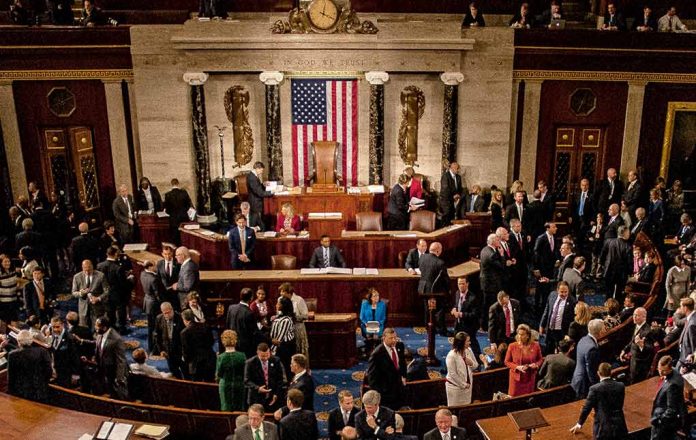
As the U.S. government inches towards a potential shutdown, Congress finds itself at a crucial crossroads with funding discussions yet unresolved.
Key Takeaways
- Congress faces an imminent shutdown as current funding expires on March 14.
- Partisan disagreements hinder the creation of a new spending deal.
- The Republicans’ slim majority complicates achieving a bipartisan resolution.
- A year-long stopgap measure is under consideration to prevent a shutdown.
- Federal operations may be severely affected if an agreement isn’t reached.
Impending Expiration of Government Funding
The U.S. government stands at a precipice, with funding set to run out on March 14. Both parties remain entrenched in a stalemate within Congress. Republicans are pushing for heightened border security funding and tax cuts, while Democrats emphasize protecting key public programs. The looming deadline is intensifying pressure on lawmakers to negotiate and prevent a shutdown.
The possible government shutdown would mark the first significant one in over six years. This would occur during President Trump’s tenure as parties grapple with negotiating priorities over critical fiscal policies while maintaining government operations under the current structure.
As of February 24, 2025, the U.S. government faces a potential shutdown on March 14, 2025, when the current continuing resolution (CR) expires. Congress has yet to reach an agreement on a final fiscal year 2025 spending bill, and negotiations are currently stalled. The impasse is…
— Pete Weishaupt (@peteweishaupt) February 24, 2025
Political Gridlock and Bipartisan Challenges
Political gridlock continues to obstruct tangible progress on a spending deal. Concerns arising from strained Republican-Democrat relations further complicate negotiations. Lawmakers are contemplating a full-year stopgap measure known as a continuing resolution to uphold current funding levels. This path could keep the government running at its existing budget, avoiding the disruption a shutdown would bring.
Adding to the complexities is the interplay of prominent figures like President Trump, who might influence negotiations. In December, he insisted on incorporating debt limit considerations in legislative discussions, reflecting the weight his influence carries within the party.
Negotiations and Possible Outcomes
Despite the divisions, there are inklings of optimism with notable figures such as Senate Appropriations Committee Chair Susan Collins noting some steps forward in ongoing discussions. Senators and representatives strive for a bipartisan agreement that satisfies all stakeholders, emphasizing the importance of avoiding shutdowns that impact essential government functions and employees.
Congress’s failure to reconcile differences could elongate a potential shutdown, causing operational disruptions nationally. Federal employees deemed “non-essential” and public services such as national parks are directly impacted, underscoring the necessity of reaching a consensus before the deadline.





